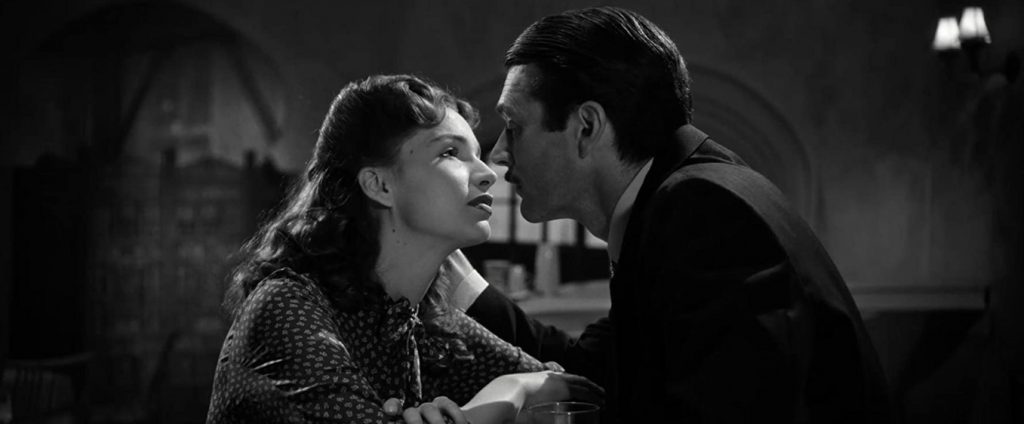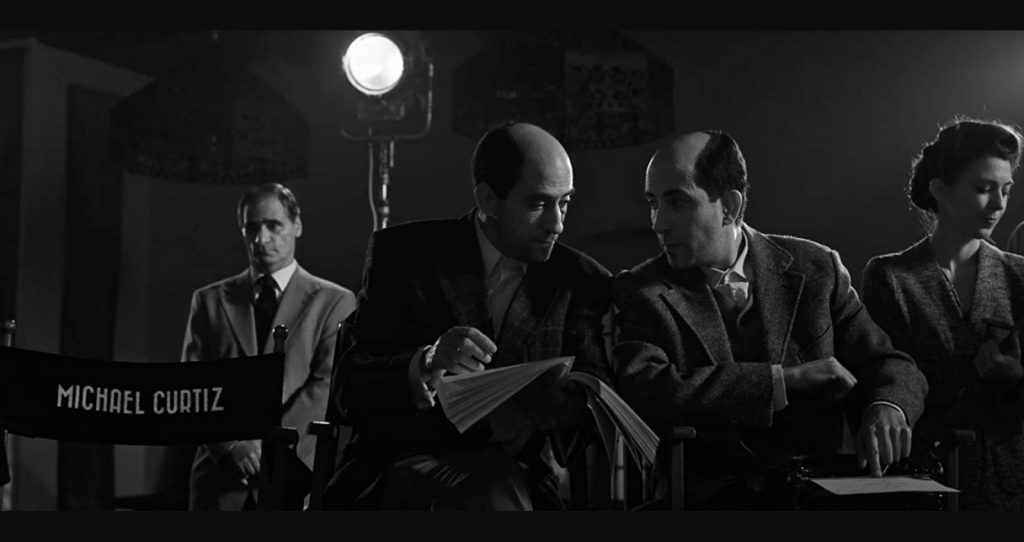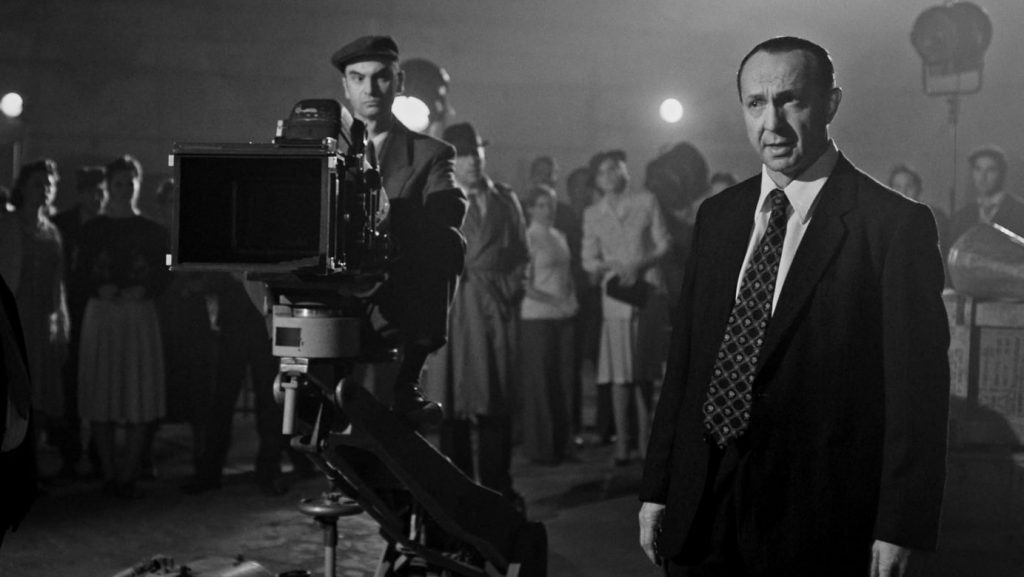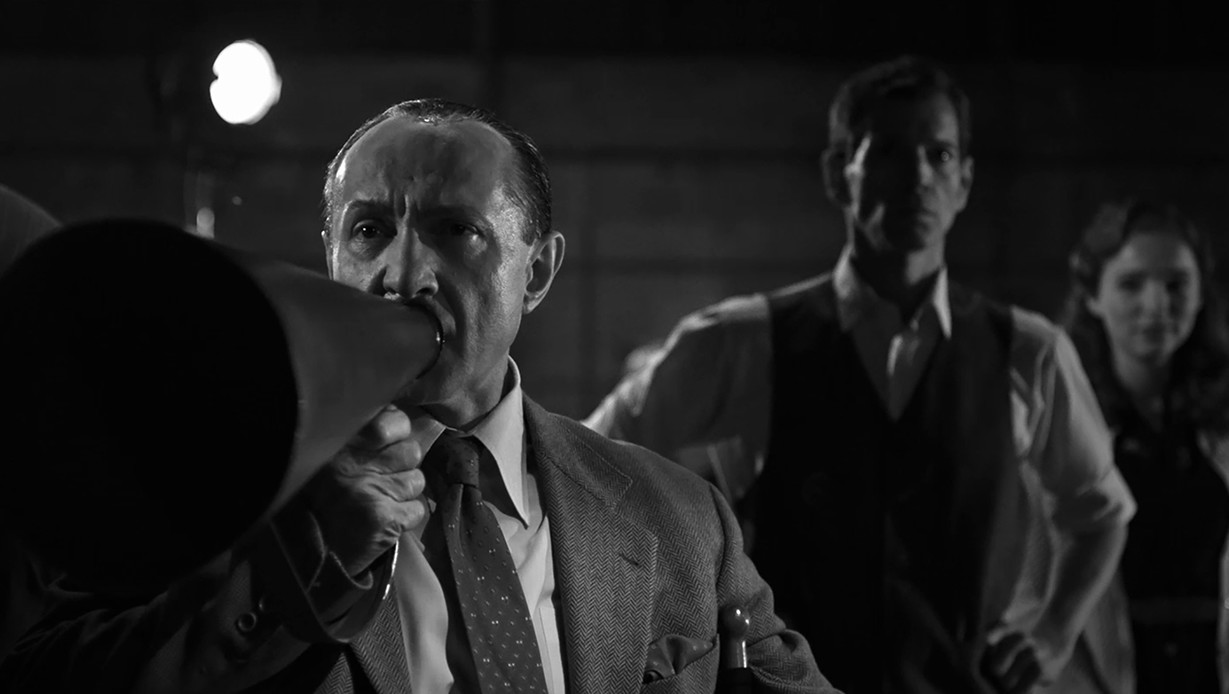‘Casablanca‘ has for decades reigned on the top of the list of the greatest films in the history of cinema. The film, directed by Michael Curtiz, is one of the best-remembered, and most celebrated films ever made. It, then, almost feels odd how the prolific Hungarian director behind the legendary feature remains virtually forgotten and underrated after all these years. Swiss-Hungarian director Tamas Yvan Topolánszky’s feature debut, ‘Curtiz‘ serves as a response to this as it celebrates the legacy of Michael Curtiz.
Topolánszky’s film offers a compelling dramatization of Curtiz’s life during the making of ‘Casablanca’ as he grapples with political interventions due to the war, along with his troubled relationship with his estranged daughter, Kitty. ‘Curtiz’ presents to us a visually stunning black-and-white slice of life as it reveals how World War II affected the production of the film, and the choices Curtiz made that eventually led him to the unforgettable ending of ‘Casablanca’.
Kitty and Curtiz

In the scenes leading up to the ending, we have Michael Curtiz’s 15th anniversary in America. It is during this scene that Kitty reaches out to Bess as a friendly gesture. But Bess, unaware that Kitty is Curtiz’s daughter, insults her for sleeping around with her husband. Johnson, who had been wooing Kitty, hears this and tries to make a move on her. When a humiliated Kitty rejects his moves, he forces himself on her and rapes her. Curtiz finds them and is able to save Kitty.
Kitty calls Curtiz a coward for not telling Bess about her after all this time. This is followed by Curtiz furiously going to the Warner Brothers, stating that he’s done as the office doors shut behind him. He then finds Kitty, and apologizes to her, as he opens up about the choices he made. It is revealed that he’s no longer the director of the film. He tells her Kitty that maybe 19 years are enough to change a man, and promises her that he will take her to a “new world” where they would start over.
Margit’s Letter
While not much about Michael Curtiz’s sister, Margit, is revealed in the film, it is her devastating letter that leads up to the final conclusion of the film. It is revealed early on in the film through conversations that Curtiz’s sister and her family are stuck in Hungary during the World War, and are unable to leave. This becomes relevant as Curtiz and his family were Jewish.
In her letter to Curtiz, who she affectionately calls “Misi”, she begs him to help her get out of Hungary. She expresses her fear of the situation because of how she and other Jews around her are being treated. She also reveals that she fears something really bad is in store for them, as the Nazis prepare to build a wall. Curtiz breaks down as he reads the letter and sits alone, contemplating.
Curtiz Ending: The Twist

Topolánszky’s ‘Curtiz’ reaches its conclusion with a twist in its final minutes as Michael Curtiz returns to the set of ‘Casablanca’ stating, “I have our ending”. Curtiz makes a choice, and he picks the film instead of Kitty, who he had made a promise to, as she waits outside. The ending becomes crucial in multiple ways as it mirrors the ending of ‘Casablanca’, but also leads to it.
Curtiz reveals the ending of ‘Casablanca’ by stating that they’re going to end the war. He goes on to reveal the final twist in the film as Rick Blaine stays behind, while Victor Laszlo boards the plane to America. Curtiz further explains how Blaine had always turned his back to everything, but now that there’s a war, he will stay back and save as many as possible. He also states how Victor Laszlo gets to go to America as he truly patriotism and what it means. Curtiz also finally decides to shoot the Nazi character in the film, something he was initially against.
“He Won’t Run After Her”

The ending of ‘Casablanca’ becomes important as it mirrors the choices Curtiz makes, and his own realizations. Curtiz, in many ways, becomes like Rick Blaine. Much like Rick, throughout the narrative, Curtiz tries to maintain a neutral stand on war, and turns his back on everything. It is only after reading Margit’s letter that he realizes he must accept responsibility.
The conclusion of ‘Casablanca’, then, represents hope, sacrifice, and patriotism, as America enters the war. This can be a response to his own inability to help his sister, that he realizes that one can’t stay neutral during war. It is also, perhaps, through the letter that he comes to the decision that the Nazi character would be shot. With Victor Laszlo flying to America with Ilsa, this could also reflect his own immigrant experience, and what he hopes for his sister.
Another way in which the ending of ‘Casablanca’ mirrors Curtiz’s decision is the final twist in both. In ‘Casablanca’ Rick promises Ilsa that she will stay behind with him as Victor Laszlo leaves for America. It is only in the final moments of the film that Rick makes her board the plane with Laszlo.
The actual ending of ‘Curtiz’ offers a parallel to this as the viewers, along with Kitty are made to believe that Curtiz will leave with her and start over. However, one is simultaneously aware that this could not be possible. When Curtiz states that Rick “won’t run after her”, he also means it for himself. Just as Rick chooses to stay back and fight the war, Curtiz stays back to finish the film.
Symbolism of the Red Light
One of the most striking visual elements of the otherwise black-and-white ‘Curtiz’ is the use of red light. The bright light is featured thrice in the film, and each time it is on or around Kitty. The coloured light becomes symbolic as it completely engulfs, painting the black-and-white composition bright red.
Its symbolism becomes clear with the ending of ‘Curtiz’. The first time the red light features, it engulfs Kitty entirely. The second time the light occurs as it is revealed that Curtiz is no longer the director of ‘Casablanca’, and he promises to start over with Kitty. It is important to note that the red light always comes from the set, and Kitty despite being engulfed by it is always on the outside.
The light could be considered symbolic of Curtiz’s own passion for films, which his biographer, Alan K. Rode, described as “an incandescent mania for filmmaking”. It then becomes important that Kitty always exists on the outside of it, but is still wholly consumed by it. The second time the light features is when Curtiz is with Kitty and makes his promise. But the red light still consumes them both despite Curtiz leaving, which reveals that he could never really leave the film.
The ending of the film has Kitty waiting in the circular lobby, mirroring her own introduction as an outsider in her father’s world. It reveals that she’s still an outsider in Curtiz’s world. But this time, as the striking red light is seen once more, it no longer touches Kitty. The final moments have Kitty seeing the light from a distance, as she picks her things and walks away.
Read More: The True Story Behind ‘Curtiz’ Explained


You must be logged in to post a comment.